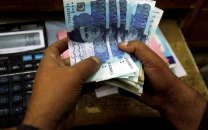Khoi: Hats off to you
G-B’s official cap withstands the test of vicious fashion cycles and harsh weather conditions.

Khoi: Hats off to you
Humans have covered their heads for different reasons since time immemorial. What initially started off as a prerequisite to protect ones head from injury, weapons or masonry got chiselled by time into a style statement. With the turn of time, hats, caps or traditional headgear became a symbol of hegemony and self-proclaimed aristocracy and soon after hats progressed to become not only a status symbol, but also an art form.
Stand alone and strong
In the modern times, we see more and more people investing in headgear to serve as an emblem of status, religion or fashion. However this trend race has not been able to wither away the dedication people of Gilgit-Baltistan (G-B) feel towards their culture and its totems. Khoi, a cap that is considered the official headgear of G-B, is still an integral part of the traditional formal dress in this mountain-locked region and is worn by many as a symbol of pride.
Made from the finest wool, the history of khoi can be traced back to the days when the region comprised of small but independent princely states before 1947 and during the 17th and the 18th century.
The cap — white in colour — was also part of the uniform of Gilgit Scout during pre-partition days, a force commended by Major William Brown and it is still part of the uniform of Northern Light Infantry Regiment (NLI).
The perfect solution
They say ‘necessity is the mother of invention’ and nobody knows that better than the people of G-B, who have moulded their culture to suit the harsh weather and terrain conditions. Khoi was conceptualised to escape the freezing winds of a region that sees dropping of temperature to 25 degree centigrade below freezing point during winters. According to a resident of Gilgit, Afaq Wali, one feels the true essence of khoi when they pair it with the traditional dress. “You feel the glory of this headgear when you wear it the way it should be worn,” he said.
Wali added that apart from serving as a cultural artwork, “The added advantage of khoi is that it can serve as the protective cover against the northern chilly winds.” The price of the cap varies and generally ranges from Rs200 to Rs1,500 per piece, depending on the quality of material or in this case, wool used. The hat, that is made locally, is available in white, brown and black but according to the shopkeepers brown colour sells the most because of its absorbing capabilities. The colour white — a symbol of class — is used on special occasions like weddings and other ceremonies.
Fluctuating demand
The material may be the same, but the design and style of khoi is different in every region, which means that G-B has a totally different concept of this headgear from the neighbouring areas such as Chitral and Khyber-Pakhtunkhwa. Khoi is simple and is usually devoid of any embroidery, but one needs to learn the expertise of shaping it before wearing it.
The cap is also very popular among foreign tourists who come down to G-B during summers. However, as the weather starts getting hotter, shoppers start preferring local handicrafts over winter. Anwar Khan, a shopkeeper acknowledges that the trend of wearing khoi has decreased over the years but insists that people still love to wear it. “The business gets better when groups of foreigners come from April onwards,” he said.
Other headgear with significance
Red Indian headdress — worn by the leader to exude his authority
The keffiyeh — a traditional Arab headdress with exclusive designs to differentiate pure Arabs from foreigners
Fez — associated with Turkish culture and whirling dervishes
Published in The Express Tribune, March 16th, 2012.



















COMMENTS
Comments are moderated and generally will be posted if they are on-topic and not abusive.
For more information, please see our Comments FAQ